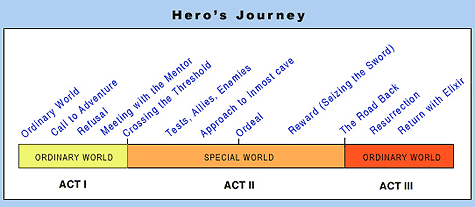Online
Interactive Narrative: Retold traditional tales and the commercial values
A research essay proposal
By MunHui KOH
for
Interactive Media Design
Pathway
Level 6 Enquiry / Report /
Essay (6FTC1075)
Assignment 1 of 3
The School of Creative Arts
Faculty of Science,
Technology and Creative Arts
University of Hertfordshire, UK in partnership with
The One Academy, Malaysia.
Submitted on 30th
July, 2014
( 570 Words)
Introduction:
The traditional mass mediums
such as books or through the verbalization from a speaker, story has been told
in straightforward structures. As technology developed, Internet has become a
communication tools. Narrator has slowly implement storyline into these tools
and fully utilized the advantage of new mass mediums to create narrative by
using interactivity. Interactivity in website has involved trivial point and
click actions on the part of the user. However, interactive narrative has more
retainable and preserve commercial value in website.
Research question:
Comparisons of selected
websites that have revive traditional Asian folklore.
Examine how interactive
narrative from selected case studies that have implement in the online medium
as it preserves both traditional and commercial values.
Research topic:
This paper will analyze and
compare selected traditional tales case studies. A proper theory that might use
to analyze in this mythology is Monomyth by Joseph Campbell. In the case
studies, traditional tales that has been told in various interactions,
non-authoring and authoring. However this online medium has not only revive the
traditional folklore but also preserve profitable purpose.
Research scope:
Author has selected two
resemble case studies, which are Ramayana projects from Google Chrome
Experimental in the recent year and Wayang Authoring a web-based application
for children. Both case studies have the essence of traditional tales from
Indonesia and presented through website platform. This paper will analyze on
each case studies that carry on the meaning of traditional tales in various
interactions. The Ramayana project has retelling the classic tales by making
immersive interaction experience and featuring capabilities in Google browser. While
Wayang Authoring, story determine by the user to create their own visual
stories by using the traditional tales characters that have provided. Both case
studies form the similarities and the contrast to preserve story and commercial
values.
Relevance to personal practice:
This research paper is
related to author’s final project which is an interactive narrative with
fantasy theme delivered by website platform. The examination and analysis of
research elements might supports author to develop more in-depth knowledge on
the term interactive narrative itself. Besides, understanding using appropriate
methods on building a narrative structure is essential for author to connect
engagement for the users. Moreover, implications of interactivity by comparing
between selected case studies, which are Ramayana and Wayang Authoring might
enlighten authors final project.
Feasibility:
This research enquiry is
moderate. Some of the research key points that have been introduced in various
modules at level 4 and level 5. As one of the theory of Marchall McLuhan “the
medium is the message” might apply in this paper. Author will explore more onto
the Roland Barthes narrative theory and how Mark Stephen Meadows has discuss on
four stages of interaction involve in narratives. Besides, author will exanimate
on concept of Monomyth by Joseph Campbell, who has describes there are 17
stages in the hero’s journey. This theory indicates the similar pattern or
structure that found in the universal narratives in different culture.
Timeline:
July
|
Week 9
Tutorial 3
Week 10
Proposal Submission
|
August
|
Week 11 & 12
Tutorial 4, Blog &
research
Week 13
Proposal Feedback
|
September
& October
|
Holidays
Blog & Research
|
November
|
Week 2, 3 & 4
Tutorial 5 , Review &
Refine blog
|
December
|
Week 5
Review & Refine blog
Week 6, 7 & 8
Blog submission, Execute
draft
Week 9
1st Draft &
Feedback
|
January
|
Week 10 & 11
2nd Draft &
Final Draft & Feedback
Week 12
Sharing Session
Week 13
Submission
|
March
|
Feedback
|
Bibliography:
Felluga, D. (2002). "Modules on Barthes: On the
Five Codes." Introductory Guide to
Critical Theory [Online] Available at:
http://www.cla.purdue.edu/english/theory/narratology/modules/barthescodes.html
[Accessed 20 Jul. 2014].
This is an useful website has discussed in Roland
Barthes narrative theory. Barthes has formulates five codes, which author will
further exanimate each of the codes for different literary analysis in
narrative.
F-i.com, (2013). Google
Ramayana Case Study. [Online] Available at:
http://www.f-i.com/google/ramayana/ [Accessed 20 Jul. 2014].
This is a case study website of the developing progress
of Ramayana.
McLuhan, M. (n.d.). Understanding Media The extensions of man. 1st ed. [ebook] London
and New York. Available at: http://beforebefore.net/80f/s11/media/mcluhan.pdf
[Accessed 20 Jul. 2014].
McLuhan theory “ The medium is the message” as a
guiding on how narrative emerge in new mass medium.
Meadows, M. (2002). Pause & Effect: The Art of Interactive Narrative
[Online] Available at:
http://www.peachpit.com/articles/article.aspx?p=29598&seqNum=5 [Accessed 20
Jul. 2014].
Meadows has provides very good points of how
interactivity in narrative by using some of the principles and steps that helps
increase in reader’s participation.
Scriptboutique.co.uk, (n.d.). Story Structure Part 7: Joseph Campbell’s
Monomyth. [Online] Available at: http://www.scriptboutique.co.uk/news/story-structure-part-7-joseph-campbell%E2%80%99s-monomyth
[Accessed 1 Dec. 2014].
Monomyth theory that useful to analyze in Ramayana
story.
Widjajanto, W., Lund, M. and Schelhowe, H. (2008).
" Wayang Authoring ". Proceedings
of the 6th International Conference on Advances in Mobile Computing and
Multimedia - MoMM '08. [Online] Available at:
http://dl.acm.org/citation.cfm?id=1497284 [Accessed 2 Dec. 2014].
A useful pdf that has noted the concept behind Wayang
Authoring.

